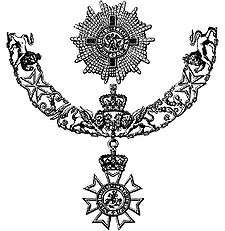Alexander Cambridge, 1st Earl of Athlone
| Major-General the Right Honourable the Earl of Athlone KG GCB GCMG GCVO DSO ADC(P) PC FRS | |
|---|---|
 | |
| 16th Governor-General of Canada | |
|
In office 21 June 1940 – 12 April 1946 | |
| Monarch | George VI |
| Prime Minister | William Lyon Mackenzie King |
| Preceded by | The Lord Tweedsmuir |
| Succeeded by | The Viscount Alexander of Tunis |
| 4th Governor-General of the Union of South Africa | |
|
In office 21 January 1924 – 21 December 1930 | |
| Monarch | George V |
| Prime Minister | |
| Preceded by | Prince Arthur of Connaught |
| Succeeded by | The Earl of Clarendon |
| Personal details | |
| Born |
14 April 1874 Kensington Palace, London, England |
| Died |
16 January 1957 (aged 82) Kensington Palace, London, England |
| Spouse(s) | Princess Alice, Countess of Athlone |
| Profession | Army officer |
| Religion | Anglicanism |
| Awards | See below... |
| Military service | |
| Allegiance |
|
| Service/branch |
|
| Years of service | 1894–1931 |
| Rank | Major-General |
| Battles/wars | |
|
| |||
Alexander Cambridge, 1st Earl of Athlone KG GCB GCMG GCVO DSO ADC(P) PC FRS (Alexander Augustus Frederick William Alfred George; born Prince Alexander of Teck; 14 April 1874 – 16 January 1957), was a British Army commander and major-general who served as the fourth Governor-General of the Union of South Africa and as Governor General of Canada, the 16th since Canadian Confederation.
Prince Alexander was born in London to the Duke and Duchess of Teck and was educated at Eton College and the Royal Military College, Sandhurst. In 1904, he married Princess Alice and rose in the military ranks through his service in African campaigns of the First World War, receiving numerous honours and decorations.
A cousin and also brother-in-law of King George V, he in 1917 relinquished his German titles, including that of Prince of Teck in the kingdom of Württemberg, and was elevated to the peerage as the Earl of Athlone. He was in 1923 appointed as South Africa's governor-general by the King, on the recommendation of Prime Minister of the United Kingdom Stanley Baldwin, to replace Prince Arthur of Connaught, and he occupied the viceregal post until succeeded by the Earl of Clarendon in 1930. Athlone then served as Chancellor of the University of London until, in 1940, he was appointed as Canada's governor general by King George VI,[1][2][3][4] on the recommendation of Prime Minister of Canada William Lyon Mackenzie King, to replace the Lord Tweedsmuir, and he occupied the post until succeeded by Viscount Alexander of Tunis in 1946. Athlone helped galvanise the Canadian war effort and was a host to British and American statesmen during the Second World War.
After returning to the United Kingdom, Athlone sat on the organising committee for the coronation of Queen Elizabeth II. He died at Kensington Palace in 1957 and was interred in the Royal Burial Ground, Frogmore.
Early life, education, and military career
Prince Alexander of Teck was born at Kensington Palace on 14 April 1874,[5] the fourth child and third son of Prince Francis, Duke of Teck, and Princess Mary Adelaide, Duchess of Teck. Although his mother was a granddaughter of King George III and cousin to Queen Victoria, Athlone, as the son of a prince of Teck in Württemberg, was styled from birth as His Serene Highness and held the title Prince Alexander of Teck.[5][6] He was known, however, to his family and friends as Alge, derived from the first two letters of Alexander and George,[7] and was characterised as a meticulous individual with a quick, but short-lived, temper and an ability to be cautious and tactful.[7]

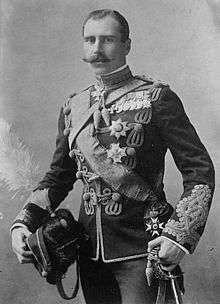
When Prince Alexander was nine years old, his parents for two years fled the United Kingdom for continental Europe to escape their high debts; but the Prince remained at Eton College before moving on to the Royal Military College, Sandhurst.[6] In October 1894, having completed his officer's training, Prince Alexander was commissioned as a second lieutenant in the 7th Queen's Own Hussars,[6][8] and shortly after served in the Second Matabele War. He was mentioned in despatches during the conflict and, after its cessation, was appointed on 8 December 1898 by Queen Victoria as a Knight Commander of the Royal Victorian Order.[9] He received a promotion to lieutenant in June 1899 and to captain the following April.[10][11] For his actions in the Second Boer War, Alexander was in April 1901 appointed by King Edward VII as a Companion of the Distinguished Service Order.[12]
The announcement came on 16 November 1903 that Prince Alexander had become engaged to his second cousin once removed,[13] Princess Alice of Albany, daughter of Prince Leopold, Duke of Albany, and thus a granddaughter of Queen Victoria and niece of the then soon-to-be Governor General of Canada, Prince Arthur, Duke of Connaught and Strathearn. The two were wed at St. George's Chapel, in Windsor Castle, on 10 February 1904 and,[5][6] six days later, in celebration of the wedding, the Prince was promoted to the grade of a Knight Grand Cross of the Royal Victorian Order.[14] The couple thereafter had three children: Princess May of Teck, born 1906; Prince Rupert of Teck, born 1907; and Prince Maurice Francis George of Teck.[15][16] Maurice, however, lived only for less than six months, between 29 March and 14 September 1910.
In the same year Prince Alexander was appointed Chairman of Middlesex Hospital.[7]
First World War
Prior to the outbreak of the Great War in 1914, Prince Alexander, who had been promoted to major in January 1911 and was a brevet lieutenant-colonel commanding the 2nd Life Guards,[17] was nominated by the British Prime Minister Herbert Asquith to serve as Governor General of Canada. However, the Prince was called up for active service with his regiment,[18] taking him to battle in France and Flanders. He was promoted to the rank of lieutenant colonel, with the temporary rank of brigadier-general, in December 1915.[19] at the same time he was serving as the head of the British Mission to the Belgian Army. For his service on the battlefields, in June 1917 Prince Alexander was appointed by his brother in law, King George V, as a Companion of the Order of St. Michael and St. George.[20]
During the war, anti-German sentiment throughout the British Empire led the King to change the name of the royal house from the Germanic House of Saxe-Coburg and Gotha to the more English House of Windsor, while simultaneously renouncing all Germanic titles for himself and all members of the Royal Family. Through a royal warrant issued on 14 July 1917, Alexander, along with his brother, Prince Adolphus, Duke of Teck, similarly relinquished all of his German titles, styles, and honours, choosing instead the name of Cambridge, after his grandfather, Prince Adolphus, Duke of Cambridge.[21] Alexander was then known simply as Sir Alexander Cambridge (being entitled to the honorific sir due to his position as a Knight Commander of the Royal Victorian Order), until, on 7 November 1917, the King created him Earl of Athlone and Viscount Trematon.[22] Athlone had declined a marquessate, as he thought the title did not sound British enough. Athlone's wife retained her royal style and title, while their surviving children became the Lady May Cambridge and Rupert Cambridge, Viscount Trematon. Rupert was to inherit the title of Earl of Athlone, but he died on 15 April 1928, ten days shy of his twenty-first birthday, meaning the third creation of the title became extinct with the death of the first earl.
Post-war career and Governor-General of the Union of South Africa
Following the cessation of hostilities in Europe in 1918, Athlone was promoted to the brevet rank of colonel in June 1919, and retired from the army that November, with the honorary rank of brigadier-general.[23][24] He took up posts in the civilian world, continuing at Middlesex Hospital. Because of his experience there, he was appointed in 1921 to chair an investigative committee on the needs of doctors. Known as the Athlone Committee, its work resulted in the creation of post-graduate schools for medical education and research,[7] such as the Royal Postgraduate Medical School at Hammersmith Hospital and the London School of Hygiene & Tropical Medicine. In March 1922, he was promoted to the rank of colonel in the Regular Army Reserves, retaining his honorary rank of brigadier-general.[25]
For their London residence, the Athlones used the grace and favour apartments of Princess Alice's mother, the late Duchess of Albany, in the Clock House at Kensington Palace and, in 1923, they acquired a country residence, Brantridge Park, in West Sussex.[26]
In December of the same year, Athlone was appointed by the King as both an honorary major-general and as the Governor-General of the Union of South Africa,[7] replacing his wife's cousin, Prince Arthur of Connaught.[27] He arrived in Pretoria in January 1924 and was immediately at work with his viceregal duties, opening the newly finished parliament building, just weeks before his South African prime minister, Jan Smuts, suddenly advised him to prorogue the legislature.[28]
In the ensuing election—the running of which forced Athlone to cancel the planned tour of Prince Edward, Prince of Wales[28]—the National Party won a majority of seats in the National Assembly, meaning Athlone appointed the party's leader, James Barry Munnik Hertzog, as his new prime minister. At the time, Afrikaner nationalism was increasing in the dominion, and Hertzog was a republican who promoted the secession of South Africa from the British Empire. As such, he proposed the country adopt its own flag over the Union Flag. Athlone, however, proved sympathetic and tactful, and resolved the issue by advancing a flag that was unique to South Africa, but which still contained the Union Flag within it, despite opposition from numerous Afrikaners. He also gained popularity with South Africans of all races through his frequent tours of the country,[7] performing a number of ceremonial duties, including opening Pioneer Park in Johannesburg.[29]
For his service to the Crown in South Africa, Athlone was appointed by George V as a Knight Companion of the Order of the Garter, on 17 April 1928,[30] and, upon his return to the UK, was made on 4 August 1931 the Governor and Constable of Windsor Castle.[31] The following year, he was also selected as the Chancellor of the University of London, which post he held until 1955.[32]
Governor General of Canada


In Canada in the late 1930s, there had been calls from government circles and the media alike for the King to appoint a Canadian-born individual as governor general. However, with the rush to fill the post after the unexpected death of the incumbent viceroy, the Lord Tweedsmuir, and with the country embroiled in the Second World War, Canadian prime minister William Lyon Mackenzie King advised King George VI that the time was not right for such a change in viceregal tradition.
Instead, it was George's uncle, the Earl of Athlone, whose name Mackenzie King put forward and, after the Earl accepted, it was announced from the prime minister's office on 2 June 1940 that the King had, by commission under the royal sign-manual and signet, appointed Athlone as his representative.[32] Subsequently, Athlone, along with his wife and his aide-de-camp, Alastair Windsor, Earl of Macduff,[n 1][33] voyaged to Canada to take up his position, their liner using a submarine-evading zig-zag pattern across the Atlantic Ocean to Halifax, Nova Scotia.[34] After travelling on to Ottawa by train, Athlone was sworn in during a ceremony in the Senate chamber on 21 June 1940.
Athlone immediately made himself active in the support of the war effort, travelling across the country, and focusing much of his attention on the troops, either those training at military facilities or those injured and in hospital. Viewing his position as governor general as a link between Canadians and their monarch, Athlone also communicated in speeches that the King stood with them in their fight against Adolf Hitler and the Nazi regime.[32]
The war was brought close to home for the Athlones also because many of those belonging to displaced European royal families sought refuge in Canada and resided at or near the royal and viceroyal residence, Rideau Hall. Among the royal guests were Crown Prince Olav and Crown Princess Märtha of Norway; Grand Duchess Charlotte and Prince Felix of Luxembourg; King Peter of Yugoslavia; King George of Greece; Empress Zita of Bourbon-Parma (Austria) and her daughters; as well as Queen Wilhelmina of the Netherlands and her daughter, Princess Juliana.[35] Further, in December 1941, British prime minister Winston Churchill arrived at the residence, where he presided over British Cabinet meetings via telephone from his bed.[36]
It was Athlone's duty to play host at Quebec City to his prime minister, still Mackenzie King, as well as Churchill and United States president Franklin D. Roosevelt, who all gathered to take part in what would become known as the Quebec Conferences, with the first taking place between 17 and 24 August 1943 at the viceregal residence in La Citadelle, and the second occurring from 12 to 16 September 1944 at the Château Frontenac. It was at these meetings that the four men discussed the Allied strategies that would eventually lead to victory over Nazi Germany and Japan. When Germany fell on 8 May 1945 and Japan on 15 August of the same year, Athlone led the national celebrations held on Parliament Hill and elsewhere. He thereafter spoke in speeches about Canada's future being marked not by war but by a strong role in reconstruction and reconciliation.[32]
During his time as the Canadian viceroy, Athlone also lent his status to various charitable and other social events, and mounted a number of activities of his own, such as tobogganing parties and skating lessons on the grounds of Rideau Hall, as well as skiing in Gatineau Park. When he departed Canada at the end of his time as the King's representative, Athlone left as a legacy the Athlone-Vanier Engineering Fellowship, awarded by the Engineering Institute of Canada.[32]
Post-viceregal life
After Athlone's replacement as governor general was appointed on 21 March 1946, he returned to the United Kingdom to retirement, taking up residence again in a grace and favour apartment at Kensington Palace and, on 1 September of that year, resigning as colonel of the 7th Queen's Own Hussars.[37] He did not completely remove himself from public activity, however, and was, along with his Canadian viceregal successor, the Viscount Alexander of Tunis, appointed to the committee charged with organising the coronation in 1953 of Athlone's great-niece, Queen Elizabeth II,[38] and continued to sit as Chancellor of the University of London until 1955.[32]
The Earl of Athlone died at Kensington on 16 January 1957, and he was interred in the Royal Burial Ground at Frogmore.
Titles, styles, honours, and arms
| Viceregal styles of The Earl of Athlone (1940–1946) | |
|---|---|
  | |
| Reference style |
His Excellency the Right Honourable Son Excellence le très honorable |
| Spoken style |
Your Excellency Votre Excellence |
| Alternative style |
Sir Monsieur |
Titles
- 14 April 1874 – 14 July 1917: His Serene Highness Prince Alexander of Teck
- 14 July 1917 – 17 July 1917: Major (Bvt. Lieutenant-Colonel and Temp. Brigadier-General) Sir Alexander Cambridge
- 17 July 1917 – 3 June 1919: Major (Bvt. Lieutenant-Colonel and Temp. Brigadier-General) the Right Honourable the Earl of Athlone
- 3 June - 6 November 1919: Major (Bvt. Colonel and Temp. Brigadier-General) the Right Honourable the Earl of Athlone
- 6 November 1919 – 1 March 1922: Major (Bvt. Colonel and Hon. Brigadier-General) the Right Honourable the Earl of Athlone
- 1 March 1922 - 1 December 1923: Colonel (Hon. Brigadier-General) the Right Honourable the Earl of Athlone
- 1 December 1923 - 21 January 1924: Colonel (Hon. Major-General) the Right Honourable the Earl of Athlone
- 21 January 1924 – 21 December 1930: His Excellency Colonel (Hon. Major-General) the Right Honourable the Earl of Athlone, Governor-General of the Union of South Africa
- 21 December 1930 – 16 January 1957: Colonel (Hon. Major-General) the Right Honourable the Earl of Athlone
- 21 June 1940 – 12 April 1946: His Excellency Colonel (Hon. Major-General) the Right Honourable the Earl of Athlone, Governor General and Commander-in-Chief of the Militia and Naval and Air Forces of Canada
Honours
| Ribbon bars of the Earl of Athlone | ||||
|---|---|---|---|---|
|
|
||||
- Appointments
-
 1888 – 14 July 1917: Grand Cross of the Order of the Crown (Württemberg)
1888 – 14 July 1917: Grand Cross of the Order of the Crown (Württemberg) -
 1904 – 14 July 1917: Order of the Rautenkrone
1904 – 14 July 1917: Order of the Rautenkrone  8 December 1898 – 16 October 1910: Knight Commander of the Royal Victorian Order (KCVO)
8 December 1898 – 16 October 1910: Knight Commander of the Royal Victorian Order (KCVO)
- 16 October 1910 – 16 January 1957: Knight Grand Cross of the Royal Victorian Order (GCVO)
 5 August 1904 – 16 January 1957: Knight of Justice of the Order of St John (KStJ)[39]
5 August 1904 – 16 January 1957: Knight of Justice of the Order of St John (KStJ)[39] 19 June 1911 – 16 January 1957: Knight Grand Cross of the Order of the Bath (GCB)[40]
19 June 1911 – 16 January 1957: Knight Grand Cross of the Order of the Bath (GCB)[40] 1 June 1917 – 6 November 1923: Companion of the Order of St Michael and St George (CMG)
1 June 1917 – 6 November 1923: Companion of the Order of St Michael and St George (CMG)
 29 June 1931 – 16 January 1957: Privy Counsellor (PC)[43]
29 June 1931 – 16 January 1957: Privy Counsellor (PC)[43] 17 April 1928 – 16 January 1957: Knight of the Order of the Garter (KG)
17 April 1928 – 16 January 1957: Knight of the Order of the Garter (KG) 4 August 1931 – 16 January 1957: Governor and Constable of Windsor Castle
4 August 1931 – 16 January 1957: Governor and Constable of Windsor Castle 1937 - 16 January 1957: Fellow of the Royal Society[44]
1937 - 16 January 1957: Fellow of the Royal Society[44]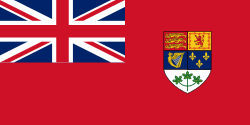 21 June 1940 – 12 April 1946: Chief Scout for Canada
21 June 1940 – 12 April 1946: Chief Scout for Canada 1940 – 16 January 1957: Honorary Member of the Royal Military College of Canada Club
1940 – 16 January 1957: Honorary Member of the Royal Military College of Canada Club
- Decorations
 19 April 1901:Companion of the Distinguished Service Order (DSO)
19 April 1901:Companion of the Distinguished Service Order (DSO)
- Medals
 1897: British South Africa Company Medal
1897: British South Africa Company Medal 1897: Queen Victoria Diamond Jubilee Medal
1897: Queen Victoria Diamond Jubilee Medal 1901: Queen's South Africa Medal
1901: Queen's South Africa Medal 1902: King Edward VII Coronation Medal
1902: King Edward VII Coronation Medal 1911: King George V Coronation Medal
1911: King George V Coronation Medal 1919: 1914–15 Star
1919: 1914–15 Star 1919: British War Medal
1919: British War Medal 1919: Victory Medal
1919: Victory Medal- 1935: King George V Silver Jubilee Medal
- 1937: King George VI Coronation Medal
 1945: 1939–45 Star
1945: 1939–45 Star 1945: War Medal 1939–1945
1945: War Medal 1939–1945 1947: Canadian Volunteer Service Medal
1947: Canadian Volunteer Service Medal- 1953: Queen Elizabeth II Coronation Medal
- Awards
 1896: Mentioned in Despatches
1896: Mentioned in Despatches 1915: Mentioned in Despatches
1915: Mentioned in Despatches 1915: Mentioned in Despatches
1915: Mentioned in Despatches- 1 January 1935: Royal Victorian Chain[45]
- Foreign honours and decorations
.svg.png) 24 October 1915 – 16 January 1957: Grand Cordon of the Order of Leopold[46]
24 October 1915 – 16 January 1957: Grand Cordon of the Order of Leopold[46].svg.png) 24 February 1916: Military Cross[47]
24 February 1916: Military Cross[47] 9 December 1916: Grand Officer of the Legion of Honour[48]
9 December 1916: Grand Officer of the Legion of Honour[48] 14 January 1918 – 16 January 1957: Member First Class with Swords of the Order of St. Anna[49]
14 January 1918 – 16 January 1957: Member First Class with Swords of the Order of St. Anna[49] 16 April 1918: Croix de guerre[50]
16 April 1918: Croix de guerre[50]
Honorary military appointments
- 3 June 1910 – 16 January 1957: Personal Aide-de-Camp to His Majesty the King (AdC(P))[51]
.svg.png) 21 June 1940 – 12 April 1946: Colonel of the Regiment of the Governor General's Horse Guards
21 June 1940 – 12 April 1946: Colonel of the Regiment of the Governor General's Horse Guards.svg.png) 21 June 1940 – 12 April 1946: Colonel of the Regiment of the Governor General's Foot Guards
21 June 1940 – 12 April 1946: Colonel of the Regiment of the Governor General's Foot Guards.svg.png) 21 June 1940 – 12 April 1946: Colonel of the Regiment of the Canadian Grenadier Guards
21 June 1940 – 12 April 1946: Colonel of the Regiment of the Canadian Grenadier Guards
Honorific eponyms
- Geographic locations
- Buildings
- Schools
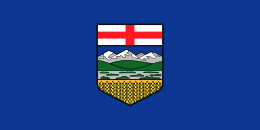 Alberta: Athlone Elementary School, Edmonton
Alberta: Athlone Elementary School, Edmonton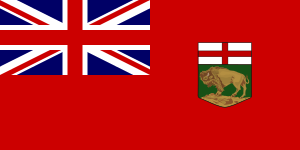 Manitoba: Athlone School, Winnipeg
Manitoba: Athlone School, Winnipeg South Africa: Athlone House, Queen's College, Queenstown
South Africa: Athlone House, Queen's College, Queenstown South Africa: Athlone Boys High School, Johannesburg[52]
South Africa: Athlone Boys High School, Johannesburg[52]
Arms
|
Ancestry
See also
Notes
- ↑ Lord Macduff (originally Prince Alastair of Connaught), who would succeed to the title of Duke of Connaught and Strathearn in 1942, was the grandson of the previous Governor General of Canada, Prince Arthur, Duke of Connaught and Strathearn, and the son of former South African governor general Prince Arthur of Connaught. He died at Rideau Hall in 1943.
References
- ↑ Galbraith, William (1989), "Fiftieth Anniversary of the 1939 Royal Visit" (PDF), Canadian Parliamentary Review, Ottawa: Commonwealth Parliamentary Association, 12 (3): 7–9, archived from the original (PDF) on 17 November 2009, retrieved 14 December 2009
- ↑ Wayling, Thomas (22 May 1939). "George VI Becomes King of Canada". The Leader-Post. Retrieved 23 July 2013.
- ↑ "George IV, Dominion Will See First 'King of Canada'". The Canadian Jewish Chronicle. 12 May 1939. Retrieved 23 July 2013.
- ↑ Tidridge, Nathan (5 February 2012). "This Jubilee day is also a sad anniversary". The Hamilton Spectator. Retrieved 23 July 2013.
- 1 2 3 Eilers, Marlene A. (1987). Queen Victoria's Descendants. Baltimore: Genealogical Publishing Co. p. 215. ISBN 978-0-938311-04-1.
- 1 2 3 4 Cokayne, G. E.; et. all (2000). The Complete Peerage of England, Scotland, Ireland, Great Britain and the United Kingdom, Extant, Extinct or Dormant. XIII. Gloucester: Alan Sutton Publishing. p. 258. ISBN 978-0-904387-82-7.
- 1 2 3 4 5 6 "Earl of Athlone (1874–1957)". University of Warwick. Archived from the original on 16 April 2009. Retrieved 25 March 2009.
- ↑ The London Gazette: no. 26563. p. 5929. 23 October 1894. Retrieved 19 February 2008.
- ↑ The London Gazette: no. 27032. p. 8045. 13 December 1898. Retrieved 24 March 2009.
- ↑ The London Gazette: no. 27106. p. 4895. 8 August 1899. Retrieved 21 May 2016.
- ↑ The London Gazette: no. 27180. p. 2283. 6 April 1900. Retrieved 21 May 2016.
- ↑ The London Gazette: no. 27306. pp. 2707–2710. 19 April 1901. Retrieved 19 February 2008.
- ↑ The London Gazette: (Supplement) no. 27616. p. 7013. 16 November 1903. Retrieved 30 March 2008.
- ↑ The London Gazette: no. 27647. p. 1013. 16 February 1904. Retrieved 24 March 2009.
- ↑ Cokayne 2000, p. 259
- ↑ "Person Page – 10094 > Prince Maurice". Peerage.com. Archived from the original on 15 July 2011. Retrieved 25 July 2011.
- ↑ The London Gazette: no. 28466. pp. 1238–1238. 17 February 1911. Retrieved 19 February 2008.
- ↑ Clifford, Bede (2004). "Cambridge, Alexander Augustus Frederick William Alfred George, earl of Athlone (1874–1957)". Oxford Dictionary of National Biography. Oxford University Press. doi:10.1093/ref:odnb/32255. Retrieved 31 March 2008.
- ↑ The London Gazette: (Supplement) no. 29433. p. 435. 7 January 1916. Retrieved 24 May 2016.
- ↑ The London Gazette: (Supplement) no. 30111. pp. 5458–5459. 1 June 1917. Retrieved 31 March 2008.
- ↑ The London Gazette: no. 30374. pp. 11592–11594. 9 November 1917. Retrieved 15 November 2007.
- ↑ The London Gazette: no. 30374. p. 11594. 9 November 1917. Retrieved 23 March 2009.
- ↑ The London Gazette: no. 31395. p. 7421. 6 June 1919. Retrieved 24 May 2016.
- ↑ The London Gazette: (Supplement) no. 31630. p. 13522. 4 November 1919. Retrieved 24 May 2016.
- ↑ The London Gazette: (Supplement) no. 32626. p. 1796. 1 March 1922. Retrieved 24 May 2016.
- ↑ Aronson, Theo (1981). Princess Alice, Countess of Athlone. London: Cassell. p. 123. ISBN 0304307572. Retrieved 2 June 2016.
- ↑ The London Gazette: no. 32884. p. 8329. 30 November 1923. Retrieved 24 May 2016.
- 1 2 "U.S.A. Crisis". Time. New York: Time Inc. III (16). 21 April 1924. ISSN 0040-781X. Archived from the original on 29 March 2009. Retrieved 25 March 2009.
- ↑ "Wemmer Pan/Pioneer Park". Johannesburg City Parks. Archived from the original on 29 December 2008. Retrieved 19 September 2008.
- ↑ The London Gazette: no. 33376. p. 2737. 17 April 1928. Retrieved 22 March 2009.
- ↑ The London Gazette: no. 33741. p. 5110. 4 August 1931. Retrieved 24 March 2009.
- 1 2 3 4 5 6 Office of the Governor General of Canada. "Governor General > Former Governors General > Major General The Earl of Athlone". Queen's Printer for Canada. Archived from the original on 11 February 2009. Retrieved 24 March 2009.
- ↑ Hubbard, R.H. (1977). Rideau Hall. Montreal and London: McGill-Queen's University Press. ISBN 978-0-7735-0310-6.
- ↑ Hubbard 1977, p. 196
- ↑ Hubbard 1977, p. 201
- ↑ Hubbard 1977, p. 202
- ↑ The London Gazette: no. 37706. p. 4347. 27 August 1946. Retrieved 25 March 2009.
- ↑ The London Gazette: no. 39578. p. 3395. 20 June 1952. Retrieved 23 March 2009.
- ↑ The London Gazette: no. 27702. p. 5047. 5 August 1904. Retrieved 31 March 2008.
- ↑ The London Gazette: (Supplement) no. 28505. p. 4592. 16 June 1911. Retrieved 9 September 2016.
- ↑ The London Gazette: no. 32877. p. 7547. 6 November 1923. Retrieved 25 March 2009.
- ↑ The London Gazette: no. 34300. p. 4155. 30 June 1936. Retrieved 25 March 2009.
- ↑ The London Gazette: no. 33731. p. 4241. 30 June 1931. Retrieved 24 March 2009.
- ↑ Dodds, E. C. (1957). "Alexander, Earl of Athlone 1874-1957". Biographical Memoirs of Fellows of the Royal Society. 3: 1–21. doi:10.1098/rsbm.1957.0001. JSTOR 769348.
- ↑ The London Gazette: (Supplement) no. 34119. p. 7. 28 December 1934. Retrieved 24 March 2009.
- ↑ The London Gazette: no. 29312. p. 9642. 1 October 1915. Retrieved 19 February 2008.
- ↑ The London Gazette: (Supplement) no. 29486. p. 2075. 22 February 1916. Retrieved 25 March 2009.
- ↑ The London Gazette: (Supplement) no. 29854. p. 12039. 8 December 1916. Retrieved 24 May 2016.
- ↑ The London Gazette: (Supplement) no. 30476. p. 827. 14 January 1918. Retrieved 19 February 2008.
- ↑ The London Gazette: (Supplement) no. 30638. p. 4716. 16 April 1918. Retrieved 19 February 2008.
- ↑ The London Gazette: (Supplement) no. 28380. p. 3859. 31 May 1910. Retrieved 25 March 2009.
- ↑ "Athlone Boys School". Athlone Boys School. Retrieved 2 October 2014.
External links
| Wikimedia Commons has media related to Alexander Cambridge, 1st Earl of Athlone. |
- Alexander Cambridge, 1st Earl of Athlone from the Library of Congress at Flickr Commons
- Website of the Governor General of Canada entry for Lord Athlone
- The Canadian Encyclopedia entry for Lord Athlone
- "The Late Earl of Athlone" Tributes to the Earl of Athlone by members of the House of Lords, 22 January 1957, as reported in Hansard
| Government offices | ||
|---|---|---|
| Preceded by The Lord Tweedsmuir |
Governor General of Canada 1940–1946 |
Succeeded by The Earl Alexander of Tunis |
| Academic offices | ||
| Preceded by The Earl Beauchamp |
Chancellor of the University of London 1932–1955 |
Succeeded by Queen Elizabeth, The Queen Mother |
| Honorary titles | ||
| Preceded by Edward, Prince of Wales |
Grand Master of the Order of Saint Michael and Saint George 24 June 1936 – 16 January 1957 |
Succeeded by The Earl of Halifax |
| Preceded by The Viscount Esher |
Constable and Governor of Windsor Castle 1931–1957 |
Vacant Title next held by The Viscount Slim |
| Peerage of the United Kingdom | ||
| New creation | Earl of Athlone 3rd creation 17 July 1917 – 16 January 1957 |
Extinct |
.svg.png)
